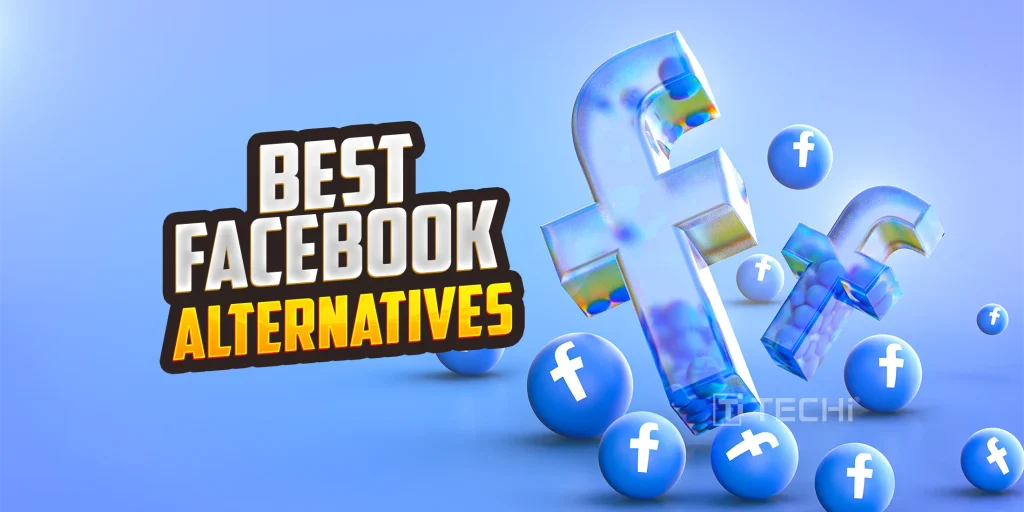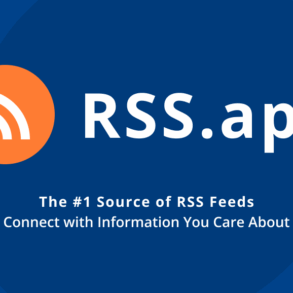
Facebook’s supremacy as the principal social media platform has experienced a decline in recent years as trust in its privacy practices has rapidly diminished. Several high-profile scandals, including the infamous Cambridge Analytica incident, have substantially undermined user confidence and compelled many individuals to reevaluate their online behaviors.
Intrusive ads and decreasing organic reach frustrate both users and businesses, and the search for dependable alternatives is intensifying. People are looking for new platforms that genuinely respect privacy, offer transparent policies, enhance real interaction, and provide algorithm-driven content.
This article breaks down 10 standout alternatives to Facebook in 2025. It introduces networks that put user experience first, accommodate specialized interests, and offer meaningful connections in evolving social media.
Why Look for a Facebook Alternative?
Many users now explore social media platforms that value privacy, control, and organic reach over filtered feeds and invasive tracking. There is frustration around data use, aggressive ad models, and reduced content reach that have pushed people to reconsider where they spend their time online.
Facebook is still used widely, but its complex algorithms and monetized visibility have made it harder for users to feel truly connected. There are millions of people looking for secure spaces and genuine communication and steadily finding better-fit platforms for their personal and professional goals.
There are some key reasons behind this change in behaviour of users on Facebook:
- Privacy: There are growing concerns about data misuse and a lack of control.
- Ads: Overloaded feeds reduce meaningful interaction and organic reach and increase ad competition.
- Algorithms: Content visibility declines due to constant algorithm changes.
- Preferences: Users now favour platforms that offer customized and authentic experiences.
- Crowding: An Oversized user base makes audience reach difficult for new voices.
10 Best Facebook Alternatives in 2025
There are 10 best Facebook alternative platforms discussed in this guide. It includes their key features, pricing, if any, and the pros and cons of that platform.
1. Minds
Minds was launched in 2015 during a time when users were feeling uncomfortable about how their personal data was being handled online. Frustration with Facebook’s surveillance-based model led to the birth of this platform, which places privacy and freedom of expression at its core.
It offers everything you’d expect from a social media app, such as profiles, timelines, posts, groups, and sharing options, but without invasive tracking. Minds operate on transparency and put users in charge of their experience, unlike platforms that rely on algorithmic control. The more you engage, the more you earn through its built-in currency, the Minds token.
Features and Tools:
- Posts appear in chronological order, not controlled by hidden algorithms
- It is an open-source platform that allows full access to the backend code
- Anonymous account creation is supported
- End-to-end encrypted messaging for private conversations
- Minds tokens reward user engagement and support creator visibility
Pricing:
Minds has a free version with full access to standard features. A premium plan at $5/month adds options like monetization, post-promotion, feed control, and verified status. Tokens can be exchanged or used directly on the platform for added reach and rewards.
Pros:
- Privacy-focused, no algorithmic feeds or data tracking
- End-to-end encrypted messaging for secure communication
- Users earn cryptocurrency (Minds token) for content creation
- Open-source platform builds transparency and user trust
Cons:
- The Minds token system may be confusing for beginners
- The limited mainstream user base
- The interface may feel less refined than Facebook
2. Vero
Vero stepped up as a clean alternative when mainstream platforms started feeling overcrowded and impersonal. Vero was introduced in 2015 and found its audience among users who value authenticity and want more control over what they see and share. It is built without ads or algorithms, so it brings back the simplicity of early social media.
The app stands out with its elegant design and chronological feed, attracting artists, musicians, and creatives who appreciate a more intentional space. Rather than pushing viral content, Vero focuses on genuine interactions and selective sharing, which makes every post feel more personal.
Features and Tools:
- Posts appear in reverse chronological order, not filtered by algorithms
- No ads anywhere in the app
- Users can group followers into categories like friends or acquaintances
- Selective sharing lets users control who sees their content
- Supports photos, music, videos, links, and book recommendations
- Sleek interface with a professional, high-end look
Pricing:
Vero remains free for users who joined during the Founding Member phase and promises lifetime access. A subscription model is expected for future users, reinforcing its premium brand without resorting to ad revenue.
Pros:
- Transparent timeline with no algorithmic influence
- Completely ad-free for an uninterrupted experience
- Designed to appeal to creative professionals
- Allows private, selective sharing based on contact tiers
Cons:
- Mobile-only experience with no desktop access
- Planned subscription may limit adoption
- Smaller audience compared to larger platforms
Also Read: Traversing the Digital Frontier: The Imperative of Cloud Security in Today’s Cyber Landscape
3. Instagram
Instagram appeals to those who enjoy social interaction but prefer content that speaks through images and video. As a visual-first platform, it attracts creators, brands, and users who want their posts to be seen, not just scrolled past. It’s part of Meta; its experience feels clean, sharp, and far more dynamic than its older sibling.
Many of Facebook’s interactive features are built into Instagram, but its emphasis is on short-form video, high-quality images, and curated Stories to offer a more immersive way to connect. Whether you’re showcasing a product or capturing everyday life, Instagram keeps things highlighted and engaging.
Features and Tools:
- Reels support short, creative video content for growth and engagement
- Stories offer 24-hour content perfect for daily updates and behind-the-scenes moments
- Built-in Shopping tools help brands sell products directly through posts
- Tag, comment, and geolocation features boost interaction
- Focus on high-quality images and video enhances user appeal
Pricing:
Instagram is free for normal users, but it includes monetization features for creators and brands. Subscriptions allow creators to share exclusive content for a monthly fee, including private Stories, live videos, and bonus posts to turn engagement into income.
Pros:
- Tools like Reels, Stories, and Shopping combine creativity with utility
- A massive user base means your Facebook network is likely here, too
- Less noise from controversial topics keeps feeds more enjoyable
- Interactive features make content sharing highly engaging
Cons:
- Still owned by Meta, so privacy questions arise
- Spam in comments and DMs is common
- Algorithm-heavy feed may reduce organic reach
4. Diaspora
Diaspora entered the scene as one of the first platforms to truly challenge the idea that social media must be centralized. It caters to users who value ownership of their data and want more control over how and where their personal information lives. Diaspora doesn’t operate under a corporate umbrella; unlike most networks, it runs on a decentralized network managed by independent communities.
Diaspora is built with privacy in mind and allows users to post updates, share media, and engage in conversations without sacrificing control. Its open-source foundation gives every user the option to participate on their terms, free from ads or tracking software.
Features and Tools:
- It operates on decentralized servers, known as Pods, chosen based on location or privacy laws
- Uses “Aspects” to segment contacts for private sharing
- Supports photos, videos, status updates, hashtags, and markdown formatting
- Offers direct messages, two-factor authentication, and birthday alerts
- Anonymous signups allowed for added privacy
- Users can mute unwanted messages if deletion isn’t possible
Pricing:
Diaspora is completely free to use. There are no ads, subscriptions, or hidden charges. Volunteers or communities run pods, and while some accept donations, participation remains cost-free for users.
Pros:
- Full control over data and the freedom to host your own pod
- No advertising or corporate data collection
- Targeted post-sharing through custom contact groups
- Familiar social tools in a privacy-first environment
- Open-source framework supports transparency and customization
Cons:
- The interface may feel outdated compared to newer platforms
- Understanding pods can be confusing for new users
- The inability to delete direct messages could limit private use
5. Telegram
Telegram has carved out its place among social platforms by focusing on speed, security, and versatility. Millions of users got frustrated with the clutter and tracking tied to traditional networks. Telegram offers a clean, faster alternative built for private communication and massive-scale interaction. Its growth past 500 million users signals just how strongly that message has resonated.
Telegram isn’t just a chat app like Facebook Messenger. It’s a full communication hub where individuals, communities, and public figures can engage without the noise of ads or the worry of data surveillance. Everything about it feels more intentional and more secure.
Features and Tools:
- Text, voice, and video messaging with rich media support
- Self-destructing messages and end-to-end encrypted chats
- Public channels with unlimited reach and groups that support up to 200,000 members
- Custom sticker packs, continuous chat scrolling, and pinned messages for organization
- Open-source framework for public code review with a secure proprietary server structure
- Smooth sync across devices through cloud-based architecture
Pricing:
Telegram is completely free, with all its features accessible to every user. There are no subscriptions, no upsells, and no hidden limits. Users have full access from day one.
Pros:
- Privacy-focused design with encrypted messaging and disappearing chats
- The full feature set rivals Messenger, including large-scale communication options
- Supports massive groups and broadcasts without restrictions
- Lightweight and cloud-based, and works across devices without eating storage
- Open-source transparency combined with secure infrastructure
Cons:
- User adoption may require convincing others to make the switch
- No central feed, messages must be checked individually
- Lacks the broader networking tools found in social-first platforms
6. Reddit
Reddit speaks to users who want more than just scrolling; they want conversation, curiosity, and community. It’s where topics don’t just trend, they grow. Reddit lets users dive into focused forums that align with their interests rather than relying on a central feed, not just what an algorithm decides they should see.
The platform operates around subreddits, each dedicated to a specific topic, hobby, or idea. If you’re into home renovation, indie films, conspiracy theories, or investing, there’s likely an active community built just for that. Live discussion, shared experiences, and user-led moderation keep things relevant and engaging.
Features and Tools:
- The upvote/downvote system helps quality content rise while filtering out noise
- Subreddits offer targeted spaces for nearly any interest imaginable
- Accounts can be created anonymously, with no real name required
- Karma points reward active users and highlight community trust
- Volunteer moderation within each subreddit keeps discussions on track
Pricing:
Reddit is free to use with optional Premium access for $5.99/month. The subscription removes ads, unlocks exclusive content, and provides monthly Reddit Coins to award standout posts and comments.
Pros:
- A massive variety of topic-specific communities
- Content surfaced by users, not hidden algorithms
- Anonymity supports open, candid discussion
- Moderation helps maintain quality in active forums
- The Karma system builds trust and rewards genuine contributions
Cons:
- The interface can feel dense for newcomers
- Focused more on public forums than private chats
- Some subreddits attract bots or low-effort content
- Navigating deep comment threads can feel clunky
7. LinkedIn
LinkedIn has grown far beyond its roots as a job board. Today, it serves as a thriving space for professionals to connect, share insights, and build credibility in their fields. Its focus remains career-oriented, but the platform now doubles as a social network where business minds exchange ideas and stay informed on what’s happening in their industries.
Whether you’re sharing a milestone, following a company, or contributing to an ongoing discussion, LinkedIn encourages meaningful engagement that aligns with professional goals. It’s less about casual chatter and more about cultivating opportunity through expertise and visibility.
Features and Tools:
- Users can explore job listings, apply directly, and receive custom alerts linked to their experience and interests.
- Company pages allow users to stay in the loop with updates, hiring news and thought leadership content from businesses they follow.
- LinkedIn offers Creator Mode, Stories, and native video tools to help users grow their presence and showcase expertise.
- The Learning section includes hundreds of professional development courses aimed at shining both soft and technical skills.
- Recruiters and employers can access a dedicated suite of tools to source talent and manage hiring campaigns efficiently.
Pricing:
Most features are available through a free account. Premium plans begin at $14.99/month. It unlocks tools like InMail messaging, salary insights, and detailed analytics that help job seekers and business professionals make informed decisions.
Pros:
- LinkedIn centers its network around professional growth and industry conversations.
- The platform supports job seekers with advanced filters, saved searches, and application tracking.
- Community standards and moderation keep harassment and spam to a minimum.
- The feed offers a steady stream of content focused on careers, leadership, business strategy, and innovation.
- Rich post formats, such as videos and Stories, allow professionals to share more than just text-based updates.
Cons:
- The interface isn’t built for personal socializing or family interactions.
- How to navigate connections and use networking tools may take time for new users.
- InMail and connection requests can sometimes feel excessive or impersonal.
8. Pinterest
Pinterest has quietly become one of the most trusted and fastest-growing platforms in the social space. Pinterest focuses on discovery and inspiration, and makes it a favorite among users seeking ideas rather than arguments. Its steady growth and high user satisfaction now place it ahead of even Meta-owned titans in multiple categories.
Pinterest gained almost 463 million monthly active users as of early 2023. Pinterest now reaches more than 7% of the global population aged 13 and older. It’s not just gaining users; it’s gaining trust. A recent satisfaction score placed Pinterest at 73 out of 100, ahead of LinkedIn, Instagram, and even Facebook, which reflects a growing confidence in the platform’s direction.
Features and Tools:
- Users can browse millions of pins across topics like home décor, fashion, recipes, and DIY projects and save them to personal or collaborative boards.
- The platform functions more like a visual search engine than a typical social app to prioritize discovery over conversation.
- Pinterest’s partnership with LiveRamp allows advertisers to access first-party data securely through private data “clean rooms” and protects user privacy while enabling personalized campaigns.
- Shopping tools help users transition from inspiration to purchase. Its product tagging, visual search, and integrated catalogues support e-commerce growth.
- Advanced visual search capabilities allow users to find items using images instead of keywords.
Pricing:
Pinterest is free for normal users. Businesses and advertisers can run paid promotions, as Pinterest offers smart ad tools designed for visual-first campaigns.
Pros:
- Pinterest ranks high in user satisfaction and continues to grow steadily across demographics.
- The platform provides a clutter-free environment focused on ideas, not social drama.
- Users can discover and organize content intuitively through boards and topic feeds.
- E-commerce integration makes it ideal for brands to sell visual products.
- Pinterest protects user privacy through secure advertising partnerships.
Cons:
- Pinterest leans more toward content discovery than personal interaction.
- Social networking features like messaging or live chat are limited.
- Businesses may require a visual content strategy to thrive here.
9. Mastodon
Mastodon offers something rare in today’s online era: a network without corporate control. It is built on a decentralized foundation and connects users through independently run servers, each with its own culture and rules. This setup invites people to join communities that reflect their interests without breaching their data.
Mastodon still feels connected even with its distributed model. Users can follow accounts across different servers. This makes the experience feel unified while still respecting boundaries. It gives users freedom without the usual noise, as there are no ads, no feed manipulation, and no data tracking.
Features and Tools:
- Every post appears in the order it was published. This allows users to scroll through a feed that an algorithm hasn’t shaped.
- The platform supports videos, audio, images, polls, and even custom emoji sets. It makes it easy to express yourself in multiple ways.
- Content warnings and accessibility features create a thoughtful space for sharing both serious and creative content.
- Users can choose servers that match their values or run one themselves. This gives them complete control over moderation and data.
- Mastodon’s open-source structure allows developers and communities to build and improve the platform collaboratively.
Pricing:
Mastodon is completely free to use. Some servers may request donations to support technical updates, but the platform itself avoids monetization through ads or user data to keep the experience clean and focused on the community.
Pros:
- Users have more control thanks to the decentralized setup and community-driven moderation.
- Content appears chronologically and allows for a more honest and balanced viewing experience.
- The platform supports a wide variety of post types, from media uploads to interactive polls.
- Servers are managed locally to give users more freedom to find or create communities that feel safe.
- Open-source code keeps the platform transparent and adaptable to community needs.
Cons:
- The very first start can be confusing due to the decentralized signup process.
- The user base remains smaller than mainstream platforms, which may limit content variety.
- Users must actively follow hashtags and accounts to build a relevant and engaging feed.
10. X
X, previously known as Twitter, is a top choice for users who care about staying connected to current conversations. Its reach spans industries, countries, and cultures, which makes it one of the most immediate tools for news, reactions, and commentary. X has 500 million monthly active users. The platform continues to hold a central place in how people track events and engage with public figures.
X serves as a direct line to the pulse of what’s happening, from breaking headlines to cultural debates. Journalists, influencers, politicians, and normal users share the same space to offer a rare level of access to ideas, updates, and interactions that matter.
Features and Tools:
- The For You feed recommends content based on interaction history and trending interests and helps users find relevant posts quickly.
- Hashtags allow users to jump into ongoing discussions or follow events as they unfold.
- The platform supports text, videos, images, and polls to offer multiple ways to create and consume content.
- Users can offer paid subscriptions for exclusive content through Creator Subscriptions.
- X Premium unlocks features like editable posts, longer tweets, reply priority, and verification.
Pricing:
X is free for general use. Those users who are looking to boost their presence or access exclusive tools can opt into X Premium for $8 per month, which caters to creators, professionals, and anyone looking for greater visibility and posting control.
Pros:
- The platform is unmatched when it comes to following breaking news and live updates.
- Public figures and media outlets regularly post and interact directly with users.
- The interface is fast, clean, and easy to navigate across devices.
- Support for multimedia makes posts more engaging and flexible.
- A large, active user base ensures lively discussions on almost every topic.
Cons:
- Trending sections may get cluttered with off-topic or low-quality posts.
- Users seeking private or family-focused networks may not feel at home here.
- Some people may hesitate to join due to the nature or tech-heavy feel of the platform.
Also Read: Who holds onto the EV Boom? Spoiler: China’s Dominating the Global Market
5 Steps to Choose the Right Social Media Platform
The search for a reliable social media platform often begins with frustration and ends in confusion. A new social platform selection often feels like flipping through static on a crowded radio: too much noise, not enough clarity. But once you narrow your focus, the right fit starts to show itself.
Every platform carries its own rhythm, whether you’re chasing deeper conversations, building a brand, or just keeping up with people who matter.
Step 1: Define Your Goals
Every scroll, post, or comment starts with a purpose. The very first step is to figure out what you want. You have to think beyond features and ask what kind of online presence you want to build.
If staying close to friends and family matters most, look into platforms that keep conversations flowing. Group chats, private threads, and feed-based updates help maintain that connection.
Creators and entrepreneurs, on the other hand, should chase tools that elevate their work. Whether it’s video reels, livestreams, or built-in insights, each tool has its power.
Step 2: Research Features and Privacy Policies
Every platform runs on its rhythm, but not all rhythms match your pace. What works for casual scrolling may not work when you’re chasing reach or results.
If you’re in it for creative growth or business traction, features like content tools and audience insights should be a top priority. A clean interface won’t mean much if it can’t scale with your goals.
Data privacy deserves just as much attention as functionality. The best choice balances ease, control, and transparency without turning your information into a product.
Step 3: Evaluate Pricing Tiers and Premium Options
Sign-up might cost nothing, but the real value often hides behind a paywall. You should weigh what you’re gaining against what you’re trying to build before committing.
Creators chasing reach should look closely at platforms that reward content or boost engagement. Business owners, however, need to think in terms of return, not just cost.
Step 4: Identify Your Target Audience
Audience attention isn’t scattered; it’s concentrated in places they trust, enjoy, and return to daily. You should know where that attention lives as your competitive edge before picking a platform.
Whether it’s short videos, detailed threads, or image-based stories, people gravitate toward content that reflects how they think and feel. Matching your content to that behaviour matters more than ever.
Demographics offer more than numbers. They reveal habits, preferences, and intent. You should choose a platform that aligns with those patterns and turns casual viewers into lasting connections.
Step 5: Test the Platform
First impressions matter, but they’re rarely enough. Spend time inside the platform to see if it feels like a space where your goals can be achieved.
Try to post, join conversations, or navigate the features. These small actions often reveal more than any feature list ever could.
Real alignment comes from firsthand experience, not just specs. The right platform doesn’t just meet your goals; it fits the way you move.
Frequently Asked Questions
Why are people leaving Facebook?
The way people interact online has started to change, and it’s not just about trends, but it’s about trust. There are concerns about privacy, excessive ads, and limited organic reach that are pushing users away from Facebook. The platform no longer feels like a place built for real connection.
As platforms evolve, so do expectations. The demand for safer places and honest engagement is steering millions toward new social hubs that feel more personal and less commercial.
Is there a more ethical alternative to Facebook?
Yes, the growing demand for safe online platforms has given rise to platforms built with ethics at the core. These options focus less on algorithms and more on people.
There are several networks like Mastodon, Minds, and Diaspora that put control back in the hands of users. They offer a more transparent way to connect without ad models.
Do I have to sign up with Facebook to join Instagram?
No, you don’t need a Facebook account to join Instagram. You can sign up directly using an email address or mobile number.
Who is Facebook’s closest competitor?
Twitter is Facebook’s closest competitor, and it has started to dominate the social media category with a significant user base. It’s current updates, and global conversations attract users who are seeking fast and direct interaction.
Also Read: Industry 4.0 Shift: How Tech Changes Manufacturing and Logistics
This post was originally published on this site be sure to check out more of their content







